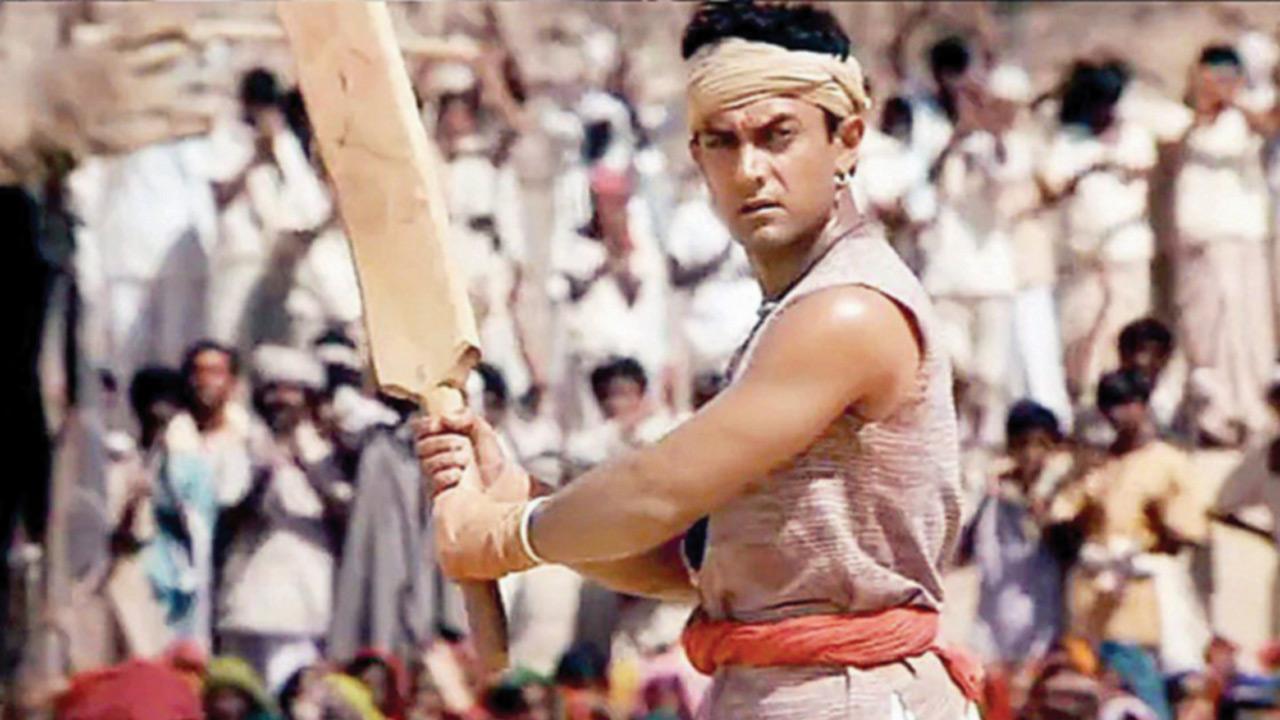Biggest hit of 2001? Gadar. Trendsetting film? Dil Chahta Hai. What of Lagaan then?

A still from Lagaan. The film’s real victory of course lay in its 27-minute, scintillating, cricket match climax—sounds suicidal, when you think of it
There is even a poster and other material lying around somewhere in my computer/hard-disk,” Shah Rukh Khan told me during an interview once, about how, at one point, he was actively scouting for moneybags for Ashutosh Gowariker’s Lagaan, so he could star in it.
ADVERTISEMENT
Only the funding was hard to find. After a failed meeting with producer Ratan Jain (Venus), SRK told Gowariker to remember all these people, who had no faith in him—once he made it big. Jain promptly called me after this SRK interview was published. I asked him to sort it out with the star instead.
To be fair to Jain and others, Gowariker, co-actor of SRK (from Circus, Kabhi Haan Kabhi Naa, Chamatkar), and Aamir Khan (from Ketan Mehta’s Holi) had directed two films before Lagaan. Neither had worked.
Both were heavily inspired by Hollywood productions—Aamir starrer Baazi (1995), from Die Hard; and Pehla Nasha (1993), practically lifted from Brian de Palma’s Body Double.
Also, rural settings had fallen off Bollywood’s map. Along with a period film (expensive, by their very nature), even a movie on sport, according to Aamir, was a no-go.
He had himself starred in a cricket movie, Awwal Number (1990), directed by Dev Anand, that was a disaster all right. But has lately been championed by connoisseurs of deliciously trashy Hindi pictures. No mean feat.
Against the advice of veterans like Javed Akhtar, once Aamir came onboard Lagaan: Once Upon a Time in India (2001) as a debuting producer, sufficiently mitigating commercial risk, finance in the form of Jhamu Sugandh must’ve naturally followed.
Late Jhamu had been a prolific film distributor, until he backed some seminal films as presenter/producer, before Lagaan—Bombay, Rangeela, Hum Dil De Chuke Sanam, Daud, Chachi 420, Earth, Astitva.
The filmmaking behind Lagaan, unusual for the time—sync sound for a massive outdoor production, AD system, call sheets, one-schedule shoot, etc—has been meticulously detailed by Satyajit Bhatkal in documentary (Chale Chalo) and book (Spirit of Lagaan).
Was Lagaan the biggest hit of 2001? That box-office record, continuing for years, was held by the Sunny Deol Indo-Pak jingo-fest, Gadar, which released on the same day (June 15).
Its relatively shorter running time (3 hrs, 11 mins, as against Lagaan’s 3 hrs, 43 mins) would’ve also allowed for an extra show, if that was the only film playing at a single-screen cinema. And there were mainly single-screens then.
Was Lagaan a trendsetter—reflecting zeitgeist? In hindsight, that position has been awarded to the other Aamir starrer from the same year, Dil Chahta Hai, which set the idiom/tone for urbane/metropolitan ‘multiplex’ films that followed. What was so special about Lagaan?
Its post-film journey, to be precise. Which started with bagging the Best Film (audience choice) award at its premiere at Locarno film festival—sending rare advance notice of a world-class festival-cred, emerging from within hardcore/Bombay mainstream.
Which wasn’t so uncommon in ’50s/’60s, with Raj Kapoor blockbusters (Awaara, Boot Polish, Jaagte Raho), simultaneously competing/winning at Cannes, or Karlovy Vary. Likewise with V Shantaram (Do Aankhein Baarah Haath, Silver Bear at Berlin), or Chetan Anand (Neecha Nagar, Palme d’Or at the very first Cannes in 1946).
By the ’70s, the split between Indian art-house (for critics/festivals) and commercial (for Joe public) seemed complete. Among others, Mrinal Sen’s Bhuvan Shome (1969) is specifically credited with birthing India’s parallel-cinema movement. Bhuvan Shome has a bit in common with Lagaan—Amitabh Bachchan as narrator; Suhasini Mulay as heroine in one, hero’s mom in the other; lead characters named Bhuvan and Gauri; both films shot in Gujarat!
Bhuvan Shome won National Award, whereas desi mainstream (say Shammi Kapoor’s Brahmachari) would ideally aim for Filmfare. Although Hindi cinema’s major hit, Mother India, was nominated for Best Foreign Film Oscar (1958), only in the second year that the category had been introduced!
When Lagaan was announced as India’s entry to the Oscars (2002), I called up a few filmmakers for a news-feature on its chances at a nom. One of whom laughed it off so badly, I nearly dropped the story idea altogether.
The night it got nominated, since nobody had expected it, I was the only rookie casually sauntering in to Aamir’s apartment, unannounced, uninvited—while he was celebrating with the cast, and fobbing off NDTV’s Samar Khan on the phone, because there was no way he could visit a TV studio.
The morning of the Oscars itself, of course, with Lagaan’s cast and crew watching together, was a media jamboree. Bosnian Danis Tanovic’s No Man’s Land won that day. Tanovic made a film with Emraan Hashmi later, titled Tigers (2014). Don’t know if anybody recalls No Man’s Land. Lagaan regularly features in global lists of some all-time favourites or the other.
Its real victory of course lay in its 27-minute, scintillating, cricket match climax—sounds suicidal, when you think of it. Aamir says he knew they were home when he noticed Sachin Tendulkar excited during the preview screening.
Macabre as it sounds, the second time I saw Lagaan, I was only looking at thousands of extras/locals in crowd sequences, hoping they were safe/alive. Bhuj, where the film was shot, had been ravaged by earthquake; killing tens of thousands, only six month’s before Lagaan’s release. No, you rarely watch a cricket match twice!
Mayank Shekhar attempts to make sense of mass culture. He tweets @mayankw14
Send your feedback to mailbag@mid-day.com
The views expressed in this column are the individual’s and don’t represent those of the paper.
 Subscribe today by clicking the link and stay updated with the latest news!" Click here!
Subscribe today by clicking the link and stay updated with the latest news!" Click here!






